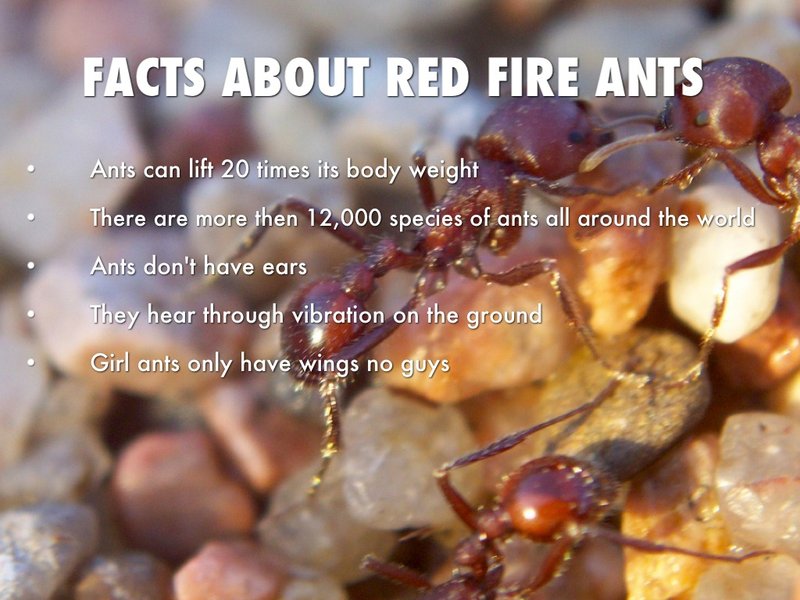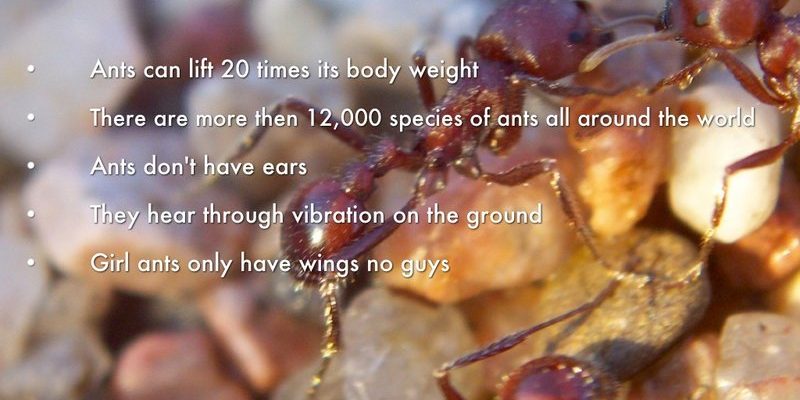
These ants, primarily found in the southern United States and other warm regions, are more than just a pest; they’re a marvel of nature. Each fire ant worker is a part of a complex society, contributing to its survival in ways that might leave you amazed. Let’s explore some of the most intriguing facts about fire ants that will change how you look at these little bugs.
1. The Sting That Packs a Punch
Fire ants are perhaps best known for their painful sting, which can feel like a burning sensation—hence their name. When a fire ant stings, it injects venom that contains a mix of toxins, which can cause a burning sensation that lasts for hours. You might be wondering how painful it really is. Well, many people describe it as a sharp, prickly sensation, followed by itching and swelling.
Interestingly, the pain isn’t just a one-and-done deal. Many find that the sting can generate itchy welts that can linger for days. For some, this can even lead to an allergic reaction. So, if you ever find yourself stumbling upon a fire ant mound, it’s best to keep your distance!
2. A Colony’s Size and Structure
A fire ant colony can be a bustling community, often ranging from a few thousand to an impressive fifty thousand ants. Just think about that for a second—imagine 50,000 tiny workers cohabitating, each with a specific job. The colony typically consists of a queen (or queens), workers, and sometimes males during mating season.
The queen’s primary role is to lay eggs, while the worker ants are responsible for all the day-to-day tasks like foraging for food, caring for the queen’s offspring, and defending the nest. This division of labor allows them to be super efficient and survive in various environments, from forests to urban areas.
3. Ingenious Nest-Builders
Fire ants are remarkable architects. Their nests can vary in appearance, from small mounds to more elaborate structures that can be several feet tall. These nests are made from soil, and the ants carefully engineer them to maintain optimal conditions inside.
When the weather gets too hot or too cold, fire ants can adjust their nests to keep their colony comfortable. They dig deeper to escape the heat or build up walls to shield themselves from the cold. Isn’t it interesting how these tiny creatures can create safe havens that respond to their environment? It’s like they have their own little climate control systems!
4. Team Players: The Power of Cooperation
Have you ever seen a group of fire ants work together? It’s like a well-orchestrated dance. When there’s a threat or even a food source, these ants will come together in numbers to achieve a common goal. Fire ants are known for their ability to link together to form living rafts during floods, enabling them to float and survive until they reach dry land.
This cooperation doesn’t just showcase their survival instincts; it’s also a great example of their social structure. Each ant knows its role, whether it’s to hold onto a fellow ant or ensure the queen is safe. Honestly, it’s pretty inspiring when you think about how well they function as a community.
5. They’re Not Just Stinging Pests
While it’s easy to see fire ants as just annoying pests, they actually play an essential role in their ecosystems. These ants help aerate the soil while digging their nests, which promotes healthy soil conditions for plants. Plus, they act as natural pest controllers by feeding on larvae and other insects, keeping populations in balance.
This means that, despite their painful sting, fire ants contribute positively to their environment. They’re like little gardeners, helping to support the ecosystem while tending to their colonies. Who knew that such tiny creatures could have a big impact?
6. Communication Through Smell
Fire ants are exceptional communicators, but they don’t use words like we do. Instead, they rely on pheromones—chemical signals that convey messages. When a fire ant stings, it releases pheromones that signal danger to nearby ants. This alerts the colony to rally together to fend off the threat.
Moreover, when they find food, they leave a trail of pheromones that guides other workers straight to the tasty snack. You could say that pheromones are their version of a social network, ensuring that everyone is in the loop. Isn’t it amazing how effective simple scents can be in communication?
7. A Reproductive Strategy Like No Other
The reproductive process of fire ants is nothing short of fascinating. The queen can lay thousands of eggs, and during specific times of the year, winged males and queens emerge from the nest for a mating flight. After mating, the males typically die shortly after, while the fertilized queens land to start new colonies—talk about a one-way trip!
This unique strategy means that fire ant populations can explode quickly. A single queen might start a new colony, leading to thousands of new little workers in just a few months. So next time you see a trail of fire ants, know that it could be just the beginning of a thriving community.
8. They Can Be Invasive
In many areas, fire ants are considered invasive species, particularly in the United States. Originally from South America, they’ve traveled and settled in different parts of the world, often outcompeting local ant species. This can lead to disruption in local ecosystems and problems for agriculture, as fire ants can damage crops.
Controlling their spread can be challenging, and numerous methods are used—everything from baits to biological controls that target the queen. It’s a constant battle to manage their populations and protect native wildlife.
9. Lifespan and Resilience
You might be surprised to learn that the lifespan of a fire ant varies based on its role. Worker ants often live for a few months, while queens can survive for several years, laying eggs the entire time. Imagine being a queen, with the responsibility of maintaining the future of the colony!
Their resilience is impressive, too. Fire ants can survive extreme conditions, including floods and droughts. They adapt their behavior and nest-building strategies to cope with whatever Mother Nature throws their way. It’s a testament to their survival skills and determination.
10. The Science of Fire Ant Research
Fire ants aren’t just significant for their ecological roles; they’re also a subject of scientific research. Researchers study their behavior and social structures to understand teamwork, communication, and even how they handle stress in their environment.
Understanding fire ants can help scientists draw parallels to other fields, including human social behavior and stress management. So, in a way, these little creatures are teaching us more about ourselves. Their intricacies are a reminder that every part of nature has something to offer.
Wrapping It Up
Fire ants might be small, but they’re full of surprises and complexities that make them truly fascinating. From their painful stings to their impressive teamwork and ecological roles, there’s much to appreciate about these tiny insects. Next time you see a fire ant, take a moment to marvel at all the remarkable things happening in that little world. You’ll be seeing them in a whole new light!

